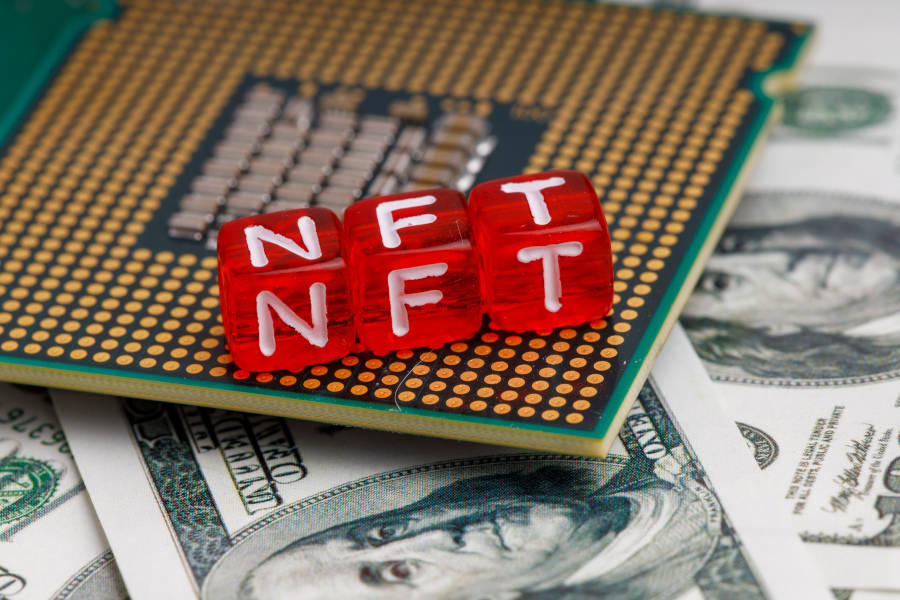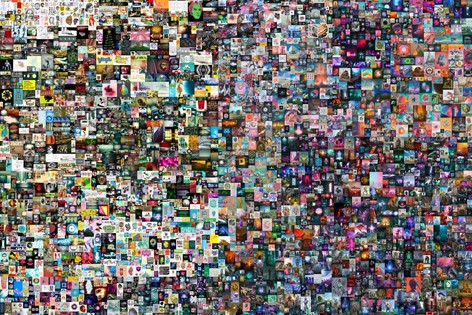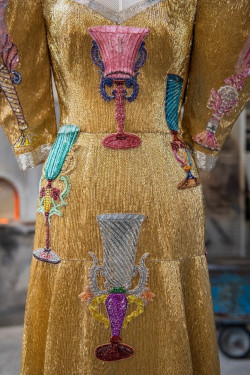
The current popularity of NFTs (Non Fungible Tokens), in particular for use in the art world, raises serious questions in terms of intellectual property. The qualification of NFTs as an intellectual work under the French Intellectual Property Code (CPI) isn’t that simple. Our Intellectual Property team takes stock of copyright, NFT owners’ rights, and the latest case law decisions.
NFTs are digital assets issued by the blockchain, on which they are stocked. In concrete terms, or at the very least as clearly defined as possible, they are non-fungible tokens, considered as titles, which give access to a unique non-interchangeable digital object.
NFTs are topical in particular because of the astronomical amounts their sales prices have reached:
– the “Everydays: the First 5000 Days” NFT by American artist Beeple, sold by Christie’s for over 69 million dollars,
– Grimes’ original music collection, sold in February 2021 for 5.8 million dollars,
– the Dolce & Gabbana jewellery and clothes collection of NFTs, sold for over 6 million euros.

(1)

(2)
The qualification of NFTs as an intellectual work under the French Intellectual Property Code (CPI) isn’t that simple.
Effectively, if the list of works covered by copyright as provided for in article L. 112-2 of the CPI is not exhaustive in order not to limit the scope of protection to certain forms of art, NFTs raise questions:
– on the one hand, their creative process arises from a computerised system, which raises the obligatory question of the mark of the author’s personality on the NFT, an obligatory condition of originality that allows for qualification as an intellectual work,
– on the other hand, the NFT is a digital property title that gives access to a digitised file containing the work.
Thus, even though an NFT owner has access to the work, this does not mean that he is the owner of the copyright to the work.
Whereas it cannot be qualified as an intellectual work:
The NFT constitutes a commencement of proof of ownership of the digital object (3), because of its inscription on the blockchain.
Effectively, each registration on a blockchain platform creates a unique digital fingerprint in the form of a suite of numbers and letters that is linked to a sole document. Moreover, this process is associated to a time- and date-stamping service that links this event to a precise time and date.
Its application to copyright is similar to that of the Soleau envelope (a sealed envelope serving as proof of priority for inventions, valid in France), which allows a work to be dated.
Subject to having provided for contractual terms, via a smart contract, the NFT ensures the author of a droit de suite (resale right) on the work that is accessible via the NFT.
Droit de suite allows the author or his beneficiaries to receive a percentage of the sale of the support of the work if such sale is carried out by a professional from the art world, and this, historically, in order to recognise the effort made by an artist, whose works may have become successful after his death.
Yet, article L. 122-8 of the CPI limits the scope of application of droit de suite to plastic and graphic arts.
Hence, if the NFT is not the work’s support, nor an intellectual work, as we mentioned above, it should not benefit from droit de suite.
In practice, by registering the NFT on the blockchain and thanks to a smart contract, any NFT transfer is recorded. That also allows the author of the work to follow ownership transfers.
In light of the above, the impact of NFTs and their legal scope remain uncertain. However, 2022 should bring answers, thanks to outstanding cases:
– the infringement action brought by Hermès against Rothschild, creator of the “MetaBirkin” NFT collection that reproduces fur bags inspired by the Hermès Birkin bag,
– the conclusions of the French Higher Council for Literary and Artistic Property (CSPLA), which are expected in June 2022. The CSPLA has been put in charge of a situational analysis to clarify the legal effects of NFTs,
– the various intellectual property offices that have received requests for trademark protection, such as the requests from the L’Oréal Group of brands designating as French National Institute for Intellectual Property (INPI) Class 9, products that had never before been seen in Nice Classification: Downloadable virtual property, i.e. IT programmes relative to perfumery, toiletries, cosmetics, makeup, skincare products, body care products and face care products; haircare products and hair colour products to be used online and in virtual online worlds.
This is therefore a highly topical matter that we shall be following closely. For any questions you may have on NFTs, please contact our Intellectual Property Rights team.
(1) Beeple’s collage, Everydays: The First 5000 Days, sold at Christie’s. Image: Beeple, https://www.theverge.com/2021/3/11/22325054/beeple-christies-nft-sale-cost-everydays-69-million.
(2) Dolce & Gabbana’s Dress From A Dream, Courtesy UNXD and Dolce&Gabbana, source Vogue: https://www.vogue.fr/mode/article/dolce-gabbana-nft-venise-collezione-genesi.
(3) Which was accepted as a response to Question n° 22103 asked at the French Assemblée Nationale on 10 December 2019.





